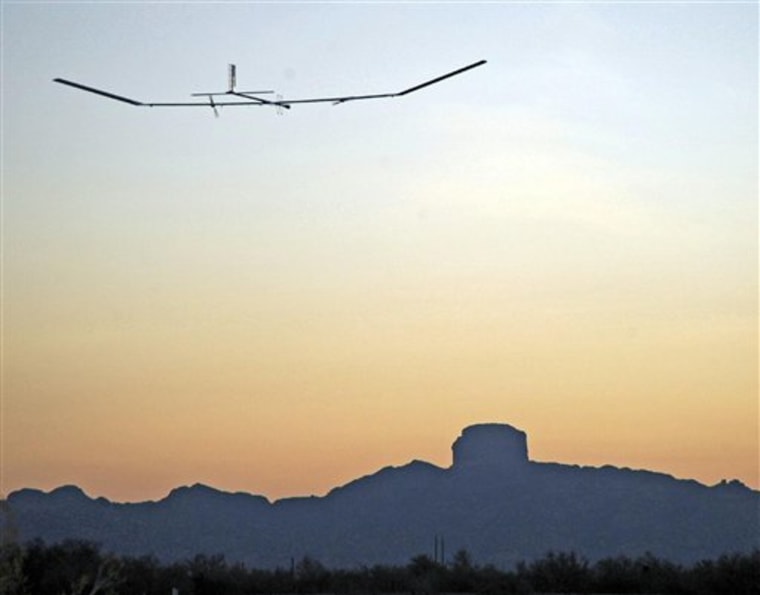An ultra-lightweight plane built from carbon fiber and powered using paper-thin solar panels has broken the world record for longest-lasting unmanned flight, its manufacturer claimed Sunday.
QinetiQ Group PLC said its propeller-driven "Zephyr" aircraft flew for 83 hours and 37 minutes, more than doubling the official world record set by Northrop Grumman's "Global Hawk" in 2001.
The flight also went longer than a previous excursion by the Zephyr, which Qinetiq claims clocked up 54 hours of continuous flight last year.
However both the Zephyr's reported flight times are likely to remain unofficial because they did not meet criteria laid down by the world's air sports federation, the body responsible for measuring and verifying air and space records, QinetiQ spokesman Douglas Millard said.
"We were concentrating more on the flight than the record," he said.
No one at the Lausanne, Switzerland-based federation could immediately be reached for comment.
The 66 pound- (30 kilogram-) plane was launched by hand on July 28 in the Arizona desert in the United States and flown by autopilot and via satellite to an altitude of more 60,000 feet (18,000 meters), QinetiQ said.
Drawing on the power of the sun during the day, the plane stayed aloft at night using rechargeable lithium-sulphur batteries. Its more than three-day flight began on July 28 and was witnessed by U.S. and British defense officials, the company said.
QinetiQ said the Zephyr, which is funded by a host of U.S. and British military agencies, had potential in the fields of reconnaissance and communications.
